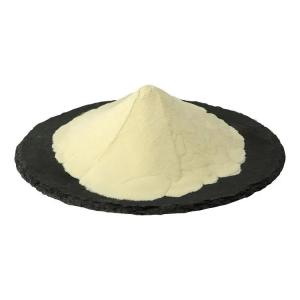News list
News Center
Hot Product
News
Phosphoric acid and advancements in food science
Time:2025-10-15
1. Introduction to Phosphoric Acid
Phosphoric acid (H₃PO₄) is an important inorganic acid widely used in the food industry. Known for its clear appearance and moderate acidity, it serves various roles in food processing and formulation. Beyond its basic chemical applications, phosphoric acid has become a cornerstone compound in the development of modern food science and technology.
2. Role in Food Processing and Formulation
Phosphoric acid is frequently used as an acidulant, pH regulator, and stabilizing agent in numerous food products. Its controlled acidity helps maintain product consistency and enhances shelf stability. It also plays a vital role in beverage formulation, particularly in carbonated soft drinks, where it contributes to flavor balance and preservation.
3. Advances in Food Technology Utilizing Phosphoric Acid
Recent advancements in food science have explored phosphoric acid’s functions beyond traditional uses. It is now incorporated into innovative food processing techniques, such as controlled fermentation and enzyme-based production systems. Its buffering properties are leveraged in precision food engineering, allowing better control over reaction environments during production.
4. Application in Nutrient Stability and Food Preservation
Phosphoric acid assists in maintaining the stability of certain nutrients and ingredients that are sensitive to oxidation or pH variation. Modern preservation methods combine phosphoric acid with other food-grade compounds to minimize nutrient degradation during storage and transportation. This has supported the growth of long-shelf-life and ready-to-eat products.
5. Sustainable and Safe Utilization
As the food industry shifts toward sustainability, researchers are examining eco-friendly production methods for phosphoric acid and its derivatives. Emphasis is placed on optimizing dosage, minimizing waste, and adhering to international food safety standards. The development of green manufacturing technologies further aligns phosphoric acid use with environmental goals.
6. Conclusion
Phosphoric acid continues to play an essential role in the advancement of food science. Its diverse applications in formulation, stabilization, and preservation underscore its importance in both traditional and modern food systems. As technology progresses, the integration of phosphoric acid in sustainable and precision-based food processing will remain a key area of innovation.
Phosphoric acid (H₃PO₄) is an important inorganic acid widely used in the food industry. Known for its clear appearance and moderate acidity, it serves various roles in food processing and formulation. Beyond its basic chemical applications, phosphoric acid has become a cornerstone compound in the development of modern food science and technology.
2. Role in Food Processing and Formulation
Phosphoric acid is frequently used as an acidulant, pH regulator, and stabilizing agent in numerous food products. Its controlled acidity helps maintain product consistency and enhances shelf stability. It also plays a vital role in beverage formulation, particularly in carbonated soft drinks, where it contributes to flavor balance and preservation.
3. Advances in Food Technology Utilizing Phosphoric Acid
Recent advancements in food science have explored phosphoric acid’s functions beyond traditional uses. It is now incorporated into innovative food processing techniques, such as controlled fermentation and enzyme-based production systems. Its buffering properties are leveraged in precision food engineering, allowing better control over reaction environments during production.
4. Application in Nutrient Stability and Food Preservation
Phosphoric acid assists in maintaining the stability of certain nutrients and ingredients that are sensitive to oxidation or pH variation. Modern preservation methods combine phosphoric acid with other food-grade compounds to minimize nutrient degradation during storage and transportation. This has supported the growth of long-shelf-life and ready-to-eat products.
5. Sustainable and Safe Utilization
As the food industry shifts toward sustainability, researchers are examining eco-friendly production methods for phosphoric acid and its derivatives. Emphasis is placed on optimizing dosage, minimizing waste, and adhering to international food safety standards. The development of green manufacturing technologies further aligns phosphoric acid use with environmental goals.
6. Conclusion
Phosphoric acid continues to play an essential role in the advancement of food science. Its diverse applications in formulation, stabilization, and preservation underscore its importance in both traditional and modern food systems. As technology progresses, the integration of phosphoric acid in sustainable and precision-based food processing will remain a key area of innovation.


 CN
CN





